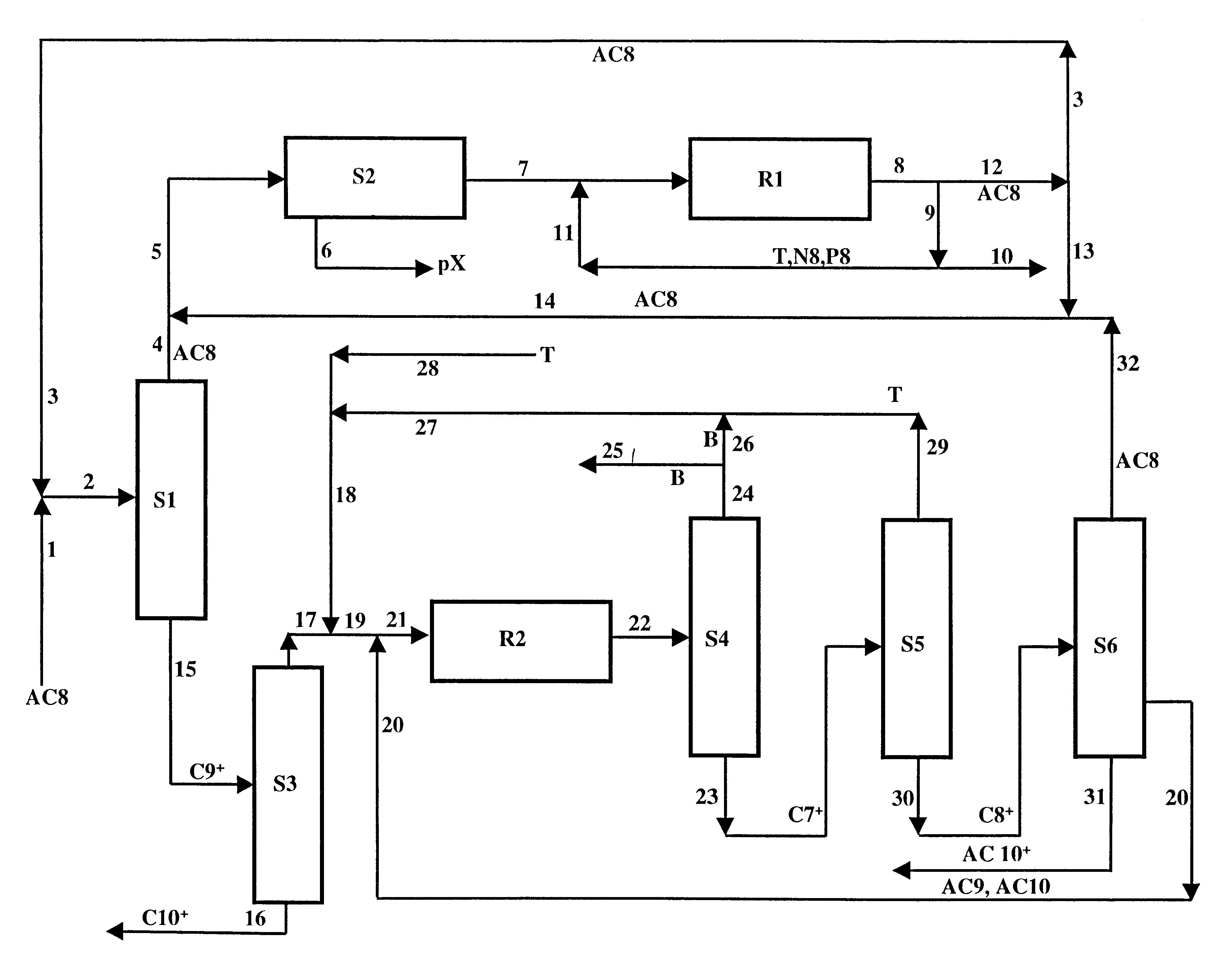Production of a xylene isomer in three stages: separation, isomerization with a catalyst with an EUO zeolite base and transalkylation with recycling of C10-aromatic compounds
a technology of xylene isomer and isomerization, which is applied in the direction of organic chemistry, chemistry apparatus and processes, hydrocarbon preparation catalysts, etc., can solve the problems of catalyst deactivation and inability to maximiz
- Summary
- Abstract
- Description
- Claims
- Application Information
AI Technical Summary
Problems solved by technology
Method used
Image
Examples
Embodiment Construction
Example According to the Invention
The following example illustrates the invention. It is carried out according to FIG. 1 with:
recycling of the naphthenic fraction to the inlet of the isomerization reactor,
recycling of the output effluent of the isomerization zone to the inlet of column S1,
recycling to the transalkylation inlet of a portion of the benzene that is collected following separation S4 at the transalkylation outlet.
The feedstock (line 2) that enters into separation column S1 has the following composition (% by weight):
This feedstock corresponds to the mixture of 22.0% by weight of a fresh feedstock (line 1) that comprises 40% by weight of AC9 and 10% by weight of AC10+, and 78.0% by weight of the AC8 mixture obtained from the isomerate and recycled (line 3).
After separation (S1), the column bottom is sent (line 15) to a second distillation (S3). This feedstock comprises a mixture of AC9 / AC10+ (80.3 / 19.7) by weight. This distillation column S3 made it possible to eliminate ...
PUM
| Property | Measurement | Unit |
|---|---|---|
| Length | aaaaa | aaaaa |
| Fraction | aaaaa | aaaaa |
| Pressure | aaaaa | aaaaa |
Abstract
Description
Claims
Application Information
 Login to View More
Login to View More - R&D
- Intellectual Property
- Life Sciences
- Materials
- Tech Scout
- Unparalleled Data Quality
- Higher Quality Content
- 60% Fewer Hallucinations
Browse by: Latest US Patents, China's latest patents, Technical Efficacy Thesaurus, Application Domain, Technology Topic, Popular Technical Reports.
© 2025 PatSnap. All rights reserved.Legal|Privacy policy|Modern Slavery Act Transparency Statement|Sitemap|About US| Contact US: help@patsnap.com


